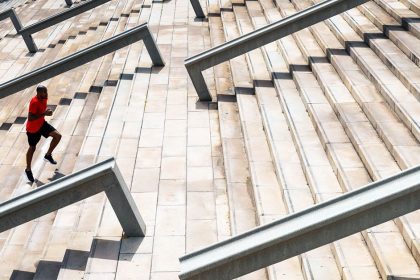A groundbreaking ultrasound technique has been developed, enabling researchers to stimulate multiple areas of the brain at the same time. This innovative advancement holds promise for future therapies targeting severe neurological disorders such as Alzheimer’s, Parkinson’s disease, and depression.
Traditionally, ultrasound has been associated with prenatal imaging, but its capabilities extend well beyond that initial use. Physiotherapists have employed ultrasound for tissue heating, while oncological surgeons harness high-intensity ultrasound to eliminate tumors. Over the past ten years, scientists have been investigating how low-intensity ultrasound can precisely modulate neural activity in the brain.
Early clinical trials are currently assessing whether this neuromodulation technique can aid in relieving symptoms of conditions like Alzheimer’s, epilepsy, and tremors.
A collaborative research effort led by scientists from ETH Zurich, the University of Zurich, and New York University has refined this technique. The team has successfully created a device that allows for the simultaneous stimulation of three to five distinct points in the brain, a significant improvement over previous methods that lacked precision.
“Given that the brain operates in networks, it’s easier to activate or inhibit a brain network if you stimulate it at multiple points simultaneously,” said Daniel Razansky, a professor at ETH Zurich and the University of Zurich, who co-led the project along with his colleague from New York University.
This non-invasive approach entails placing the device atop the head to deliver neuromodulation through the skull, eliminating the need for surgical procedures such as craniotomies. To test this method, the researchers conducted laboratory experiments on mice, positioning their heads inside a custom-made hood lined with hundreds of ultrasound transducers.
These transducers, equipped with advanced stimulation electronics, generate brief ultrasound pulses. By strategically manipulating these waves, the ultrasound signals interfere with one another within the brain, akin to how holograms are created using light waves. This new approach enables the researchers to create specific focal points through the overlapping of numerous ultrasound waves.
One of the key benefits of this innovative method is its ability to lower ultrasound intensity compared to traditional single-spot stimulations. “The less intense the ultrasound, the safer this process is for the brain,” Razansky noted, highlighting a crucial aspect of this research.
Previous methods for ultrasonic neuromodulation faced challenges due to an all-or-nothing effect. Insufficient ultrasound intensity rendered no effects, while excessively high levels could lead to uncontrolled stimulation of the entire brain, posing risks of brain damage. Furthermore, intense ultrasound could potentially cause vascular damage and overheating within the brain or skull.
The newly developed low-intensity focused ultrasound pulses produce short-term effects, which may include a slight increase in temperature at targeted points. Researchers also speculate that these ultrasound pulses may interact with ion channel proteins on neuron surfaces, regulating ion transport in and out of the cells. However, the intricate mechanisms behind neuronal activation and inhibition are still under investigation.
Another advantage of this method is its capability to visualize brain network activation simultaneously during the stimulation process, allowing researchers to track which networks are engaged.
The study detailing these breakthroughs was published in the journal Nature Biomedical Engineering and primarily aimed to develop the technology without direct medical applications being the focus at this stage. Funding for this research, particularly the collaboration with New York University, was largely provided by the United States National Institutes of Health (NIH). However, due to current political pressures affecting the NIH, the continuation of this partnership under the existing funding structure is uncertain, as explained by Razansky. He remains hopeful of pursuing this research with other financial resources.
Looking ahead, the research team plans to concentrate on potential medical applications and will begin testing the technology in various animal models suffering from brain diseases. Besides Alzheimer’s, tremors, and epilepsy, they aim to explore treatments for depression, Parkinson’s disease, and recovery after strokes.
“We rely on animals for our research,” Razansky explained. “It won’t be possible to research these developments at such an early stage in humans. We first need to learn how to control the intervention and ensure that it is safe and effective for the treatment of brain diseases.”
Razansky’s group is renowned for advancing ultrasound and optical imaging techniques, emphasizing system engineering, experimental methods, and data analysis, while their collaborators from New York lent expertise in neuroscience. The experiments and device development predominantly unfolded in Zurich, showcasing a significant step forward in brain research and treatment possibilities.






